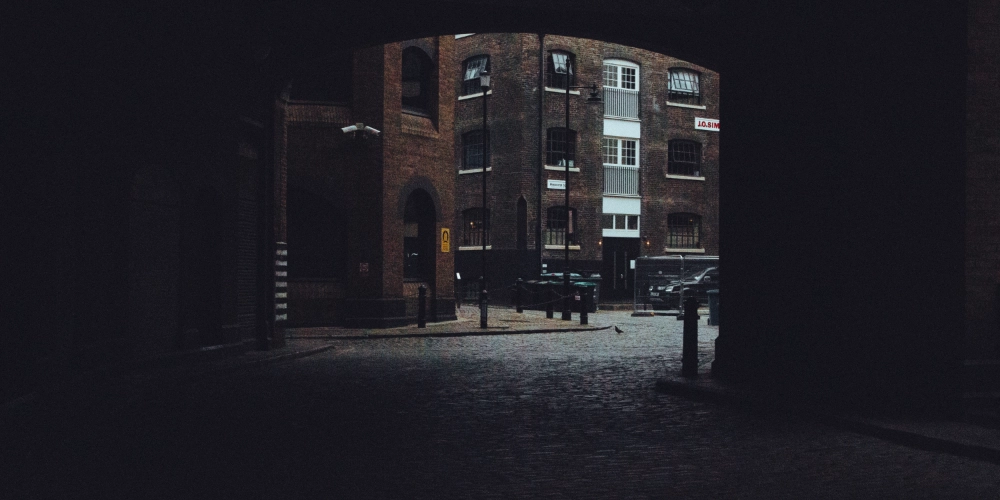Corporate Manslaughter: Responsibilities, Penalties and How to Protect Your Business
What is Corporate Manslaughter, who’s responsible, what are the legal and financial ramifications, and what can managers do to ensure the risks are minimised?

What is Corporate Manslaughter? Definition and Key Legal Facts
"Corporate Manslaughter" isn’t part of health and safety law. However, health and safety representatives and senior managers need to understand what it means, how it could affect them, and how good health and safety practices (from board to entry-level) can help to ensure charges are never something they are faced with.
In this blog, we outline what Corporate Manslaughter is, who’s responsible, the legal and financial ramifications, and some practical things you can do to ensure the risks are minimised.
Corporate Manslaughter is defined by the Corporate Manslaughter and Corporate Homicide Act 2007 as: "The gross breach of a relevant duty of care".
Corporate Manslaughter occurs when a business or the management of an organisation's activities causes the death of another person. For further guidance, the Health and Safety Executive (HSE) Corporate Manslaughter page provides detailed information on legal responsibilities and enforcement.
It’s a criminal offence which can lead to significant fines for organisations found guilty.
Who Can Be Prosecuted for Corporate Manslaughter?
To be guilty of Corporate Manslaughter, there must be a gross breach of duty by senior managers in an organisation. Understanding Corporate Manslaughter legal responsibilities is essential for leaders to ensure compliance and prevent liability.
Prosecutions are not of individuals but the organisations themselves. However, it’s important to note that individuals can still be prosecuted for "Gross Negligence Manslaughter" and/or offences under the Health and Safety at Work Act 1974 (reinforced by The Management of Health and Safety at Work Regulations 1999).
Corporate Manslaughter charges can be brought against:
- Corporations
- Government departments (e.g. NHS Trusts, the Home Office, DEFRA)
- Police forces
- Partnerships, trade unions or employer’s associations (who are employers).
Note: If you or your business have been charged with Corporate Manslaughter, it's important to seek legal advice from a lawyer immediately.
What is the Corporate Manslaughter and Corporate Homicide Act 2007?
The Corporate Manslaughter UK law, known as the Corporate Manslaughter and Corporate Homicide Act 2007 was introduced on 6 April 2008 to change the law on Corporate Manslaughter in England, Wales and Northern Ireland (Scotland has changed its own laws) after a series of incidents that occurred in the 1990s.
Under previous legislation, such as section 6(1) Criminal Damage Act 1971, an offence could only arise where an individual (rather than a corporation) had committed "culpable homicide".
Corporate Manslaughter Penalties and Fines Explained
Organisations found guilty under the Corporate Manslaughter and Corporate Homicide Act 2007 are liable for an unlimited fine. The guidelines state that the fine should be enough to punish the organisation significantly without causing them to go out of business.
A fine of 5% of an organisation’s annual turnover is suggested in the first instance, followed by 10% for subsequent instances. This can sometimes be in addition to paying prosecution costs, being given a "remedial order", and/or being forced to publicise the fact the organisation has been convicted.
Custodial Sentences for Corporate Manslaughter
Corporate Manslaughter convictions do not carry a custodial sentence because they are brought against the organisation, rather than an individual. However, custodial sentences can be brought if an individual with the organisation is also charged with Gross Negligence Manslaughter (see below).
When considering Corporate Manslaughter sentencing, the court will consider the circumstances of each case and its impact on victims and others, including:
- The gravity of the offence
- Whether there were any aggravating factors or mitigating factors
- Whether an individual can be convicted for their part in an offence committed by a company (whether they committed it personally or aided and abetted someone else)
- Any previous convictions, cautions or warnings.
Gross Negligence Manslaughter Charges
Where an organisation cannot be found guilty of Corporate Manslaughter, "gross negligence" or "negligence" charges can sometimes be brought.
Note: "Gross negligence" is a significant disregard for the safety of others and the consequences this can have. It is a higher standard than "negligence" or thoughtlessness.
The level of negligence and the resulting legal ramifications depends on how serious the incident was and what practices led to the incident, among others.
Corporate Manslaughter Case Study: Key Lessons for Businesses
Looking at Corporate Manslaughter examples helps businesses understand the real-world implications of failing to meet safety standards. In 2022, a food waste recycling company in Leicestershire was fined £2 million after being convicted of the Corporate Manslaughter of two members of staff who died in a tanker containing pig feed when trying to clean it out. The post-mortem concluded they had both drowned and it was likely they had been overcome by toxic fumes from the pig feed or lack of oxygen which had caused them to lose consciousness and fall in.
The company had no policies or procedures to ensure tankers were cleaned safely, there was no risk assessment in place and staff had no PPE. Moreover, workers had previously expressed safety concerns which had been ignored.
The officer on the case, Detective Constable Kirsty Iqbal, said: "Investigations showed that the system which was used to clean out the tankers was so fundamentally dangerous that fatal consequences were virtually certain. Mr Walker and Mr Rawson had their futures taken away from them simply because the firm did not have the correct safety procedures and equipment in place. Their deaths should never have been allowed to happen."
In addition to the fine, significant custodial sentences were also issued to the couple who owned and ran the business after being found guilty of Gross Negligence Manslaughter and in breach of The Health and Safety at Work Act 1974.
How Can Organisations Avoid Facing Corporate Manslaughter Charges?
Good health and safety comes from effective health and safety leadership across an organisation, ensuring health and safety is integrated into board-level decisions, good colleague engagement (upwards and downwards), high-quality training to all business levels, assessing and reviewing health and safety risks and practices over time, and taking reasonable action to reduce risk where necessary (take a look at our lone worker risk assessment template).
Demonstrating this will help to ensure an organisation has all the measures in place to prevent an instance of Corporate Manslaughter from occurring. If you’re wondering how to avoid Corporate Manslaughter charges, investing in strong health and safety policies, regular training, and risk assessments is critical
At SoloProtect, we help organisations in the UK and beyond to look after the safety of colleagues who work remotely, alone or in high-risk environments. Implementing a lone worker solution provides a means for these workers to discreetly call for help in an emergency, securing the fastest possible response when it matters.
Not only this, but as a management team, it’s a tangible way to show you are proactively considering the hazards your colleagues may face and have implemented a way to reduce risk.
Moreover, in the unfortunate event a situation does arise, the organisation can use the recordings of the incident to help with any legal proceedings.
Take a look at this page for more information: Why Protect Lone Workers?
Concerned about Corporate Manslaughter risks? Our team can help you implement a safer workplace and ensure compliance with UK laws.
Book a free demo, request a quote, or get answers to your questions:
- Book a Lone Worker Safety Demo →
- Get a No-obligation Quote →
- Contact Us →
- Call us: 0114 399 6000
Your message has been received and we will be in touch shortly.
Frequently Asked Questions
Corporate Manslaughter: Frequently Asked Questions
What is Corporate Manslaughter?
Corporate Manslaughter occurs when an organisation’s management seriously breaches its duty of care, leading to a person’s death. It is a criminal offence under the Corporate Manslaughter and Corporate Homicide Act 2007.
Who can be held responsible for Corporate Manslaughter?
While individuals are not prosecuted under this offence, an organisation can be charged if senior management grossly neglects safety responsibilities. However, individuals may still face charges for gross negligence manslaughter or breaches of health and safety laws.
What are the penalties for Corporate Manslaughter?
Organisations found guilty face unlimited fines, with starting points of 5-10% of annual turnover. Additional penalties may include prosecution costs, remedial orders, and reputational damage.
How can organisations avoid Corporate Manslaughter charges?
To reduce risk, businesses must prioritise workplace safety by:
- Implementing robust risk assessments.
- Providing comprehensive training.
- Ensuring compliance with HSE Corporate Manslaughter guidelines.
- Investing in safety solutions, such as lone worker protection, to enhance emergency response.
How does UK law define Corporate Manslaughter?
Under Corporate Manslaughter UK law, an organisation is guilty if management decisions or policies cause a fatality due to gross safety failures.
Where can I find more information on Corporate Manslaughter legal responsibilities?
For official guidance, visit the HSE’s Corporate Manslaughter page or the UK Government’s Corporate Manslaughter and Corporate Homicide Act 2007 page.










.webp)
.webp)








.png)
